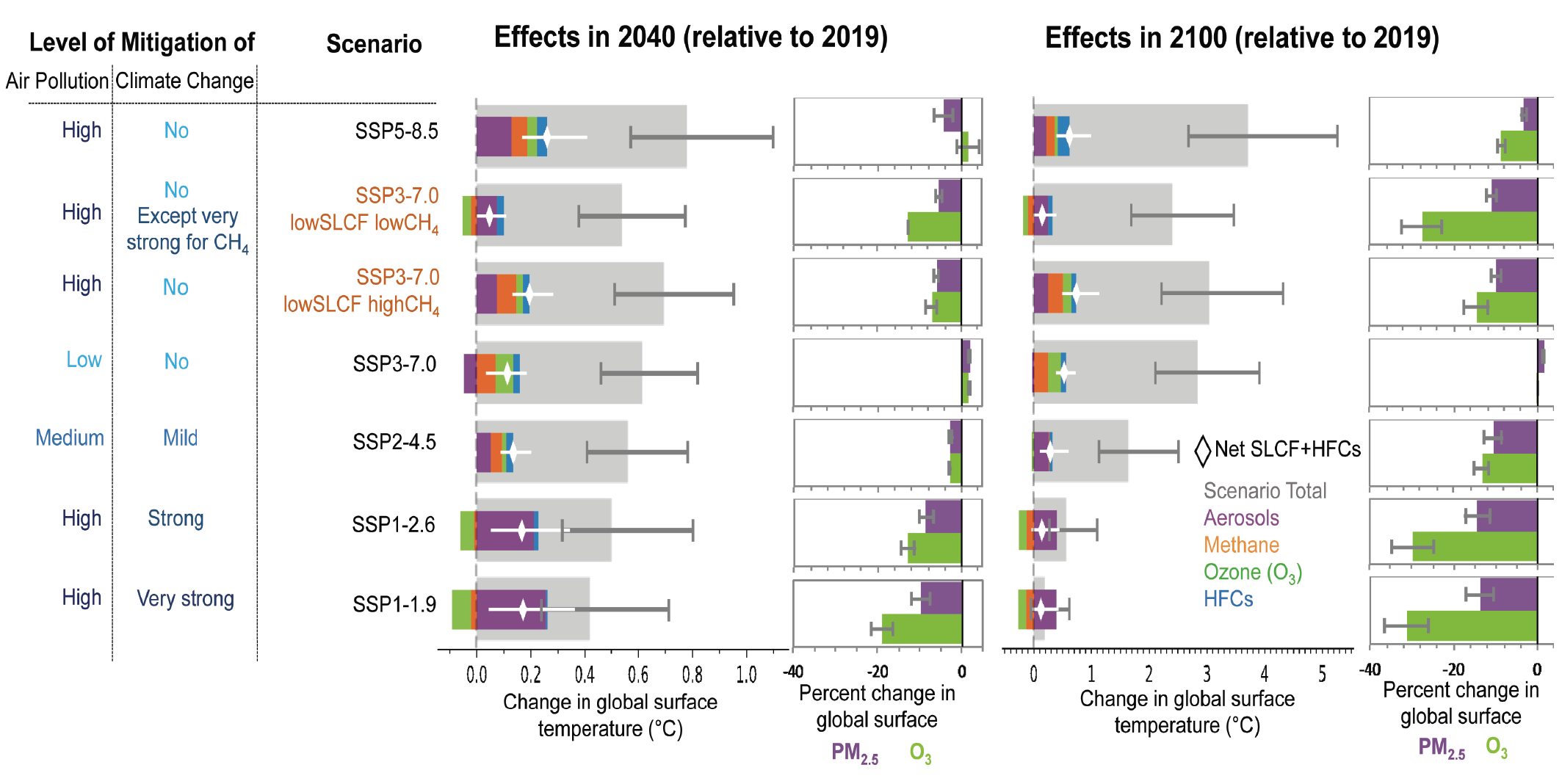Box TS.7, Figure 1
Figure caption
Box TS.7, Figure 1 | Effects of short-lived climate forcers (SLCFs) on global surface temperature and air pollution across the WGI core set of Shared Socio-economic Pathways (SSPs). The intent of this figure is to show the climate and air quality (surface ozone and particulate matter smaller than 2.5 microns in diameter, or PM2.5) response to SLCFs in the SSP scenarios for the near and long-term. Effects of net aerosols, tropospheric ozone, hydrofluorocarbons (HFCs; with lifetimes less than 50 years), and methane (CH4) are compared with those of total anthropogenic forcing for 2040 and 2100 relative to year 2019. The global surface temperature changes are based on historical and future evolution of effective radiative forcing (ERF) as assessed in Chapter 7 of this Report. The temperature responses to the ERFs are calculated with a common impulse response function (RT) for the climate response, consistent with the metric calculations in Chapter 7 (Box 7.1). The RT has an equilibrium climate sensitivity of 3.0°C for a doubling of atmospheric CO2 concentration (feedback parameter of –1.31 W m–2°C–1). The scenario total (grey bar) includes all anthropogenic forcings (long- and short-lived climate forcers, and land-use changes). Uncertainties are 5–95% ranges. The global changes in air pollutant concentrations (ozone and PM2.5) are based on multimodel Coupled Model Intercomparison Project Phase 6 (CMIP6) simulations and represent changes in five-year mean surface continental concentrations for 2040 and 2098 relative to 2019. Uncertainty bars represent inter-model ±1 standard deviation. {6.7.2, 6.7.3, Figure 6.24}
